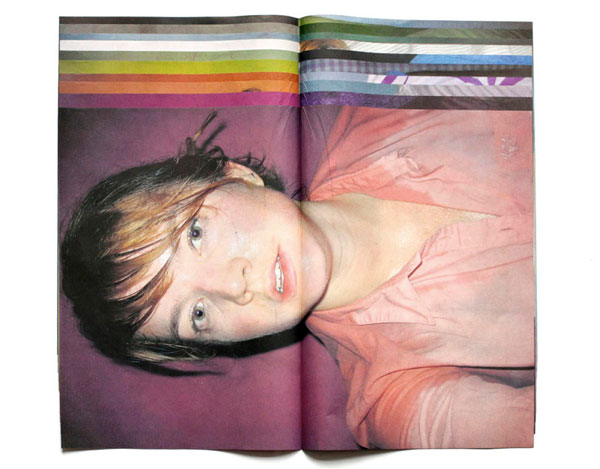
It is Her…Anouk Kruithof is this year’s Hyères’ photography winner. Her work The Daily Exhaustion impressed the judges and apart from the prize she was also offered a residency in the School of Visual Arts in New York. In the interview below the Berlin-based Dutch photographer talks about her award-winning project, her process of working and of course New York.
What has changed in your life since Hyères?
Well I am going to move from Berlin, where I live now… to New York in September!
Has all this publicity created more expectations from your part?
No, I mean it does not really interest me, I do not even know how to react on this question. There has to be a winner out of the last 10 photographer-finalists in Hyeres, but on the other hand, some conversations with some jury members did really make me think about certain ways I think or I make my work. Their criticism and their reflections on my work is worth-full, but the online publicity about Hyeres or winning the Hyeres-photography contest and the School of Visual Arts Photoglobal Award has not created expectations to me. I just like to go on with my work, think about it, and make it stronger in the next projects/works. That’s important to me.

What was the inspiration behind The Daily Exhaustion?
I wanted to create a work about our ‘daily exhaustion,’ as in stress -the feeling of unreal pressure and running from one thing to the other. I have often found myself in this ‘situation’ as almost every single person around me. The feeling of the daily exhaustion is inherent to these times. ‘The Daily Exhaustion’ is a small newspaper, which contains 23 self-portraits, where I reached the state of being exhausted after doing intense hardcore spinning (indoor cycling on music.) This sweaty state is real but more important is that this work, ‘The Daily Exhaustion’, is a metaphor for the emotional state of mental exhaustion as how workaholics and western men running around like crazy often do feel nowadays. When you browse through the publication, you will come across a gradual color spectrum which I consider as the stratification of human energy.
How did you move from the idea to the realisation of the project?
It wasn’t a conscious decision to make a work out of self-portraits in the first place; I had never made self-portraits before and probably never will again. It happened to be that I found myself feeling soooo disastrous and exhausted after my spinning lessons that I once, for fun, made a picture of myself right after the spinning class and what I saw on that photo I found quite fascinating. I could hardly control the camera which was hanging on my wheel. To me this felt as an almost objective way to photograph myself which is of course nearly impossible for somebody who works for years with the photography medium. What I felt at the moments I took this photos for ‘The Daily Exhaustion’ and what I saw on the photos afterwards felt completely right and very necessary to do something with it. That’s how ‘The Daily Exhaustion’ found its life.
How did you decide upon the presentation/ format of this work?
The final form of works or projects of mine always finds its way within the process. During working on ‘The Daily Exhaustion’ I found out that the trashyness of the photographs (taken quickly with a mini digital camera) are corresponding to the trashyness of printing color photos on newspaper paper. I do not consider ‘The Daily Exhaustion’ to be a magazine, more than an artwork in the form of a newspaper-zine.
Who are the people you photographed? How did they respond to the needs of the shooting and under what conditions did it take place?
For The Daily Exhaustion it is me, for Becoming Blue and Playing Borders I photograph people who I do not know, people from the public space who I ask to collaborate with me in my photographic projects. It is quite hard for me to convince people who want to collaborate in my work because I am not interested in flattering portraits. I am looking for something else, “the in between moments” in my one to one performance, moments where chance rules and where through sometimes a certain almost unconscious emotion or gesture of people comes to the surface.
What do you think of the contemporary photographic landscape in Berlin and what of the Dutch?
I don’t know, I am not happy talking about things such as “we Dutch artists” or ‘we German photographers’ to be honest because I don’t feel anything like that, maybe this is because I live in Berlin and I function within an international art scene, but the truth actually it lies much deeper than that. National identity strikes me as a very peevish and resentful concept. An unworthy topic even. I am a traveller and I feel more like a global citizen.
What do you look most forward to of your coming year in New York?
The experience of living in New York and absorbing as a sponge all that’s around me when walking through and visiting that city. As well as the facilities on the School of Visual Arts, where I will work a year in this special photography residency called “Photoglobal.” I heard I can work all night long in the colour-darkroom / photolab on the school, which is amazing to me!
Interview: Andreas Dimopoulos | website: anoukkruithof.nl



